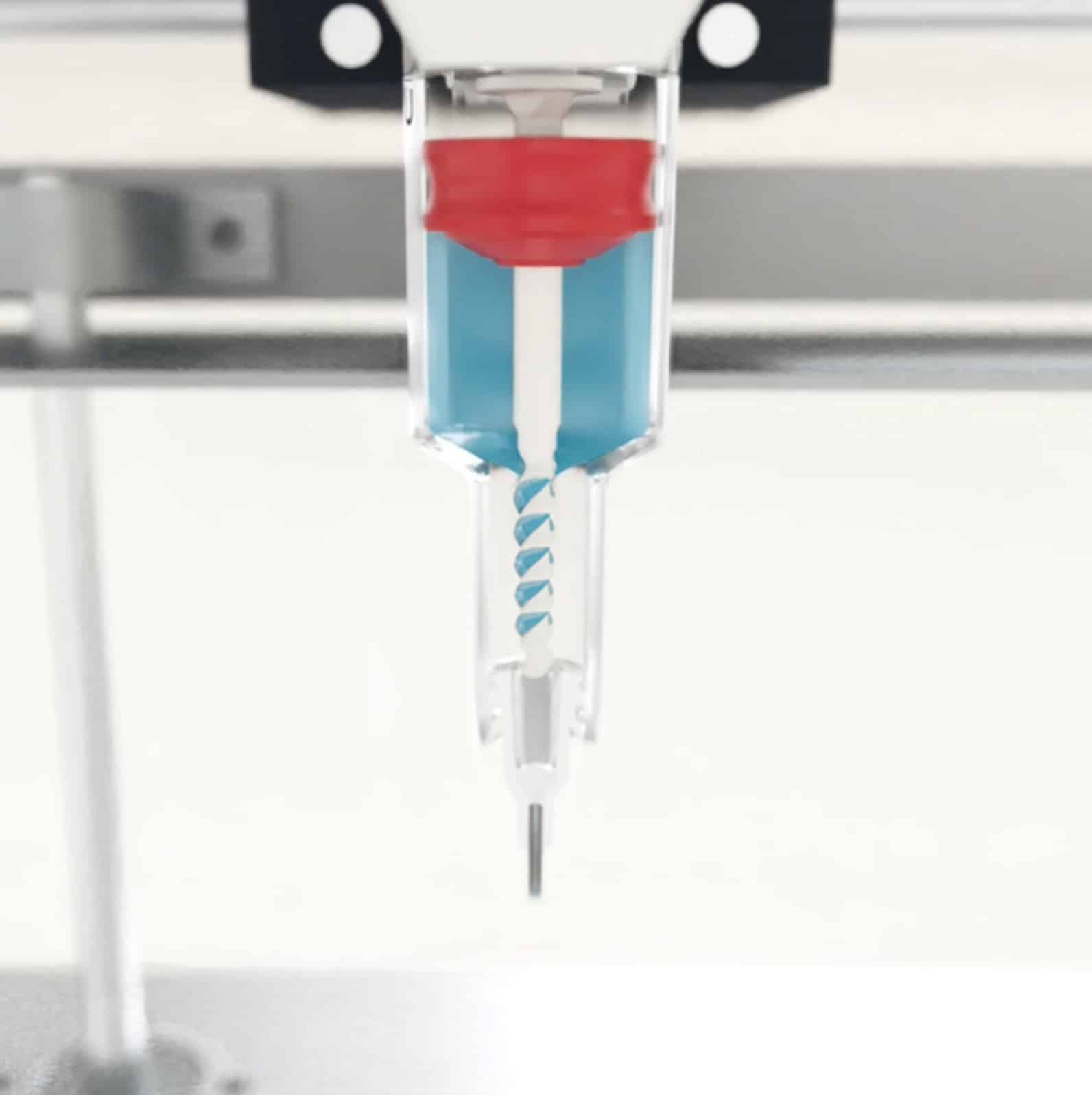When 3D bioprinting with organic substances, it is hard to overstate the importance of not damaging the cells. Print heads from Puredyne, a brand of the established dispensing specialist ViscoTec, already prioritize this through demonstrably high-precision and low-shear dispensing, although the printing results are always dependent on the dispensing needle used, of which there are many available on the market, including the ones from Japanese manufacturer, Tecdia.
Considering this, Puredyne has put needles at the top of its agenda – in order to further support the growing application area of bioprinting, and to find innovation potential.

Recently, Puredyne engineers succeeded in further improving one of the most difficult parameters in 3D printing of biomaterials during in-house laboratory tests – reproducibility. This is, of course, an important aspect for research and development in many industries.
The test series aimed to find out which technical possibilities exist to achieve the precise dispensing of cellular bio-substances with a focus on extreme sensitivity, in a more reproducible way, and to achieve the finest start and endpoints.
Manufacturing on Demand
The tests were conducted using the Puredyne print head, and Tecdia’s precision dispensing needles. The print head has an integrated, compressed air supply and is mounted on a bioprinter via a bayonet fitting with the single-use cartridge. Controlled by a stepper motor, the progressive cavity technology, installed in the cartridge, enables process-reliable and precise dispensing.
The dispensing needle, which is connected to the print head via luer lock, offers great potential for improving print quality – experiments had shown that the risk of shearing of cells in the biomaterial is greatest in the dispensing needle. However, these cellular structures must be protected. Although printing microscopically fine 3D objects is not necessarily a big problem today – printing living cells reproducibly via extrusion is. Additionally, the dispensing process must not only be precise but also fast, in order to protect the cells.
The task, outlined by the engineers, was to find a dispensing needle that optimally complements the Puredyne print head with its characteristics in precision and versatility. During the tests, the developers found that the ‘Arque’ dispensing tip from Tecdia delivered the best results and, in combination with the Puredyne kit b, dispenses the biomaterial with the highest reproducibility. The print head equipped with an Arque dispensing needle ensured consistent line width, and sharp contours, throughout the entire printing process. The optimal pressure reduction also guaranteed fine start and endpoints. According to the manufacturer, Arque dispensing tips have a seamless inner cone, which improves the flow behavior in the tip.
You might also like:
StarHagen joins the Velo3D Contract Manufacturer Network: “Our team has extensive experience manufacturing high-value parts for aerospace applications and to maintain our leadership position in the industry we knew we needed an additive manufacturing solution,” said Scott Anderson, Managing Director of StarHagen. “In our evaluation of offerings on the market, we found that none could exceed the capabilities delivered by Velo3D. The company’s unique capability of printing parts with minimal supports and its extensive adoption within the aerospace industry – including with some of our existing customers – gives us the confidence that we will be successful with our deployment.”
* This article is reprinted from 3D Printing Media Network. If you are involved in infringement, please contact us to delete it.
Author: Edward Wakefield


Leave A Comment